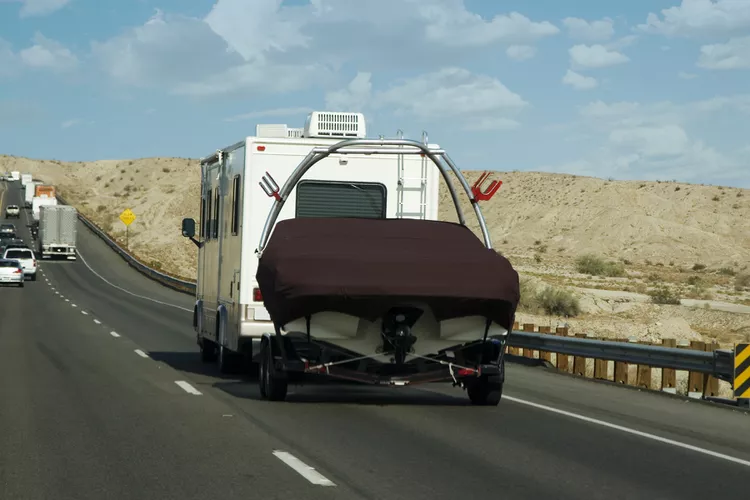Summary
Towing a Car Behind Your RV
One of the pros and cons of driving a motorhome is that you don’t have to tow it behind you. The benefit of this is that it’s easier to drive a motorhome than tow a trailer; however, the downside is that if you want to explore areas outside an RV park or campground, you’ll need alternative transportation like a rental car or shuttle service.
If you possess a trailer, you can set up at your RV site and then hit the road. Depending on your RV choice, you can also tow a vehicle behind it. Here’s how to start towing a car behind your RV efficiently.
What Types of Vehicles Can Be Towed Behind an RV?
Any vehicle or boat can be towed behind an RV as long as it doesn’t exceed the weight capacity of your towing method. When selecting a tow method, keep the weight of your vehicle or boat in mind to ensure safety. Pickup trucks, SUVs, Jeeps, and other vehicles suitable for both on and off-road can typically be towed behind most RVs larger than a Class C motorhome.
3 Ways to Tow a Car Behind Your RV
There are three primary methods to tow a car behind an RV:
- Flatbed Trailer or Enclosed Trailer
- Tow Bar
- Tow Dolly
Flatbed Trailer or Enclosed Trailer
A flatbed or enclosed trailer is one of the easiest ways to tow behind larger motorhomes and fifth wheel RVs. This method offers ample space, allowing you to bring a vehicle, off-road equipment, or additional storage. Moreover, this setup fully supports your vehicle, along with its brakes and lights.
Notably, this option allows for transporting various vehicles which might not be towable via a tow bar or dolly. However, investing in a flatbed or enclosed trailer may be costlier.
Pro Tip: One of the biggest benefits of an enclosed or flatbed trailer is the versatility it offers, allowing you to tow more than just your car or help others with their moving needs.
Tow Bar
A tow bar enables you to tow a vehicle with all four wheels on the road. This is one of the most cost-effective and widely used solutions for towing. Safety chains and cables provide stability, and it is recommended to invest in a supplemental brake system or lights to indicate turns and stops to other road users.
While tow bars are inexpensive, they are only suitable for smaller vehicles. A significant drawback is that backing up while using a tow bar is nearly impossible; therefore, disconnecting the vehicle to reposition your RV is necessary.
Pro Tip: Verify with your vehicle manufacturer regarding the suitability of towing on all four wheels before committing to this method.
Tow Dolly
A tow dolly tows a vehicle by having two of its wheels on the road while the front wheels rest on the dolly. This option is ideal for those who prefer not to invest in a flatbed or enclosed trailer but cannot use a tow bar.
Many tow dollies are equipped with surge or electric brakes, and some also feature lights; thus, eliminating the need for a supplementary system for signaling purposes. That said, like the other towing methods, it may not adequately accommodate the weight of certain vehicles.
Pro Tip: While a tow dolly is often less expensive, it may not be the most practical choice for larger vehicles. For better towing performance, consider investing in a more robust towing solution.
Should You Tow a Car Behind Your RV?
The decision hinges on individual preferences and travel habits. There are advantages, such as avoiding car rental fees and the freedom to travel as desired; on the other hand, challenges include reduced fuel efficiency, the cost of a towing package, and the learning curve associated with towing.
Furthermore, you can tow more than just a car. Consider ATVs, boats, and other cargo options that may enhance your travel experience.
In the end, whether towing a car behind your RV is suitable for your travels depends on the specific types of trips you plan, the RV sites you frequent, and your driving routes. Careful consideration of all these factors will ensure a safer and more enjoyable travel experience.





